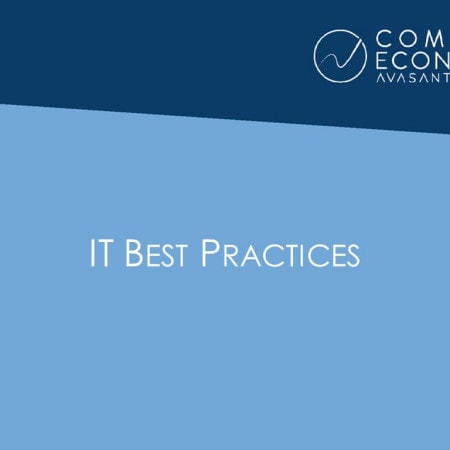-

Enterprise Broadband Can Cut Costs (May 2001)
Internet emphasis has shifted from processing speed to bandwidth. The need for wider pipes grows with increases in traffic along with graphic and sound content. As an alternative to traditional T1 or ISDN lines, broadband access can reduce both costs and hassles.
May, 2002
-

Automatic Identification and Data Capture in Supply Chains (May 2002)
The construction of automated global supply chains has many elements. Certainly there is a requirement for enterprise resource capabilities which is often derived from the new generation of enterprise resource planning (ERP) software.
May, 2002
-

Globalstar Expands Mobile Satellite Services (Sep 2000)
In February 2000, Globalstar USA launched its mobile satellite service in the United States, providing seamless voice service coast to coast with international roaming capabilities. A rollout of commercial Globalstar services began at the end of 1999, and it is anticipated that completion of the basic network rollout will be achieved by the first quarter of 2001, at which point Globalstar service will be available in over 120 countries served by 38 gateways.
March, 2002
-

Compaq Software and Hardware Highlights for 2000 (Aug 2000)
In June 2000 Compaq presented a strategy statement for OpenVMS. Central to the strategy is the release of new OpenVMS functionality every 12 to 18 months, support for all AlphaServers, and the integration of solutions with Windows NT, Tru64 UNIX, and StorageWorks. In addition Compaq pledged to enhance ultra high availability, scalability, security, and performance including support for Fastpath for SCSI and Fibre Channel, reduction in RMS locking, lock manager performance enhancements, and Extended File Cache (XFC).
March, 2002
-

DSL Can Payoff in Enterprise Applications
Digital subscriber line (DSL) is the phone company's answer to low cost, wide bandwidth communications channels. Challenging DSL are the cable companies, which offer cable modems. From a business standpoint, the matter certainly tilts in favor of DSL, although few companies have yet taken the plunge. This analysis looks at the issues that confront an IT manager considering DSL installations and what tradeoffs need to be addressed.
March, 2002
-

Vendor Tactics Will Dictate Directory Services Future
Network directories hold the potential for saving organizations millions of dollars in managing their IT resources. The key to this management is directory services. Directory service vendors, however, have been much more interested in using directories to control their market share than in providing customers with the resources they need.
March, 2002
-

Above Average(s): Measuring Application Development Performance
If I was in a room with the starting centers from every team in the NBA, I could say I was about 7 feet tall--based on the average of everyone present. Although misleading, this would be a true statement. IT organizations risk falling into a similar trap of misperception if they measure application development (AD) quality and productivity based on industry averages or high-level aggregates from myriad sources. Such an approach rarely provides meaningful insight into how well or poorly you're doing. More importantly, averages can't tell you what to do to improve your software development. To use measurement effectively, it's necessary to drill down to identify specific performance gaps and take specific actions toward improvement.
March, 2002
-

Turbulence Ahead in the ERP Market (Nov 2000)
The promises of the ERP revolution of a few years ago have too often been realized as expensive, bulky software coupled with painful rollouts and often wrenching organizational realignments. Consequently, ERP vendors are under the gun. Several have faced hard economic times along with rapid changeovers in the executive suites and disappointed customers. The major ERP suppliers are also facing a wakeup call from nimble e-commerce competitors such as Ariba, Clarify, Commerce One, I2 Technologies, and Siebel Systems to say nothing about their traditional adversaries, IBM and Microsoft. Application service providers are yet another threat to ERP providers' welfare.
March, 2002
-

eXtreme Programming Opens New Possibilities (Feb 2002)
The only certainties in software development are that the application will arrive late, cost more than expected, and fail to meet all of its functional requirements. Based on numerous evaluations conducted by Computer Economics, more than 90 percent of large-scale software applications fail to meet at least one of these goals, and about half of all developmental efforts are abandoned without delivering any useful product. The ever-growing demand for new software, along with increasing complexity of the applications, will only exacerbate the situation.
February, 2002
-

Peer-to-Peer Continues to Build Enterprise Capabilities (Feb 2002)
Peer-to-peer (P2P) computing, which has received most of its media attention from noncommercial Internet applications, is appearing in viable enterprise applications and gaining maturity through widely supported industry working groups. P2P, in its most basic form, is a decentralized computer network that communicates without the need for a dedicated server.
February, 2002
-

How to Make CRM Financially Viable
The purpose of customer relationship management (CRM) is to provide a dialog between your customers and your business. This goal implies that an organization should commit itself to major internal changes because the key to successful CRM implementation is not limited to IT issues. Rather, success depends on interdepartmental cooperation and superb leadership. The main reason that many firms have failed in their CRM deployments revolves around failing to grasp these concepts.
January, 2002

 Grid View
Grid View List View
List View